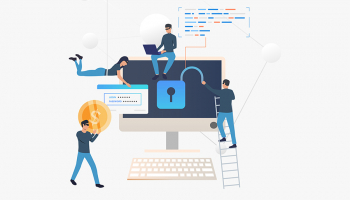How to Reduce Account Opening Fraud
Fraud attempts rose last year, but some banks are still not taking all the precautions they could
- |
- Written by Banking Exchange Staff

A significant minority of banking institutions do not have sufficient measures in place to reduce online account opening fraud, according to a new report from the Center for Payments.
The study – Digitizing Payments: The Online Account Opening Experience – found that 8% of banks and credit unions had no measures in place to mitigate payments fraud related to online account openings.
In addition, less than half of the institutions surveyed (49%) said they validated the ownership of funding accounts, while only 28% said they validated funds before completing transfers.
When transactions take place via an automated clearing house, more than half (55%) of institutions said they did not place a hold on funds, and 61% placed funds directly into the account holder’s account.
“With the increased digitization of financial services brought on in part by Covid-19, account opening, as well as other common banking services, have transitioned to an online environment,” said Laura Steele, chair of the Center for Payments.
More than a third (36%) of respondents said their company had added online account opening facilities during 2020.
“As with all banking services, conducting these online and digital services in a safe and secure manner is of paramount importance,” Steele added.
Nearly 2% of all online accounts opened between November 2019 and November 2020 were suspected as fraudulent, although just 0.9% were found to be actual fraud once investigated. The most frequent types of fraud wereimpersonated authorized party fraud, digital payment fraud, and counterfeit fraud.
A recent report from Feedzai showed that online fraud attacks rose by 250% over the course of 2020 as the pandemic pushed more and more people towards online banking.
Automated validation processes can help banks and credit unions reduce instances of fraud while also improving their due diligence efforts, the Center for Payments report showed.
Other protocols used to reduce fraud included limiting new accounts to a geographic location, a method used by 70% of institutions surveyed in the report. More than 60% added further verification steps beyond the industry standard Customer Identification Program requirements.
Angi Farren, market intelligence co-chair at the Center for Payments, said: “The expectations and new-found habits of consumers will remain well past the pandemic. So, it is important that financial institutions find safe ways to meet consumers where they are now to be better positioned for an undeniable digital-first future.”
Further findings from the report are available on the Center for Payments’ website.
Tagged under Risk Management, Consumer Compliance, Cyberfraud/ID Theft, Compliance/Regulatory, Security, Feature3, Feature, Payments,













